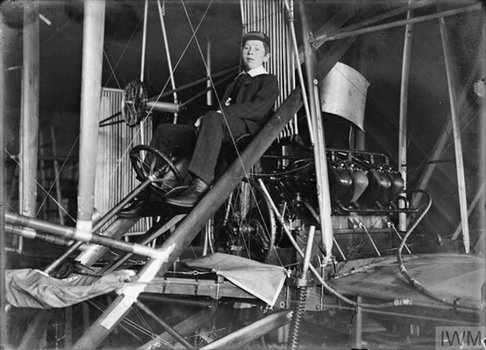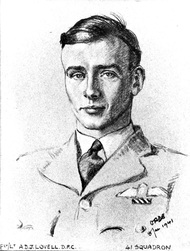Association blog
|
The booklet below features a number of former 41 Squadron pilots are listed as Station Commanders: Sowrey, Boret, Woodhall, Appleton.
0 Comments
We occasionally have contact from ex-serviceman searching out the 41 Squadron Association of the Royal New Zealand Air Force, are Antipodian sister Association. This year they are commemorating the 40th anniversary of their disbandment and have asked that I share a few words from their committee below. In 2017 we commemorate the 40th anniversary of the disbanding of 41 Squadron in the RNZAF Our squadron was formed in1947 at RNZAF Station Whenuapai in Auckland and was sent on detachment almost immediately to Malaya to assist during the insurgency in that country. The squadron flew a number of aircraft types in the early days including DC-3’s and Hastings but became better known through our relationship with the Bristol B-170… more commonly known simply as the ‘Bristol Freighter’. From the early 1950’s the squadron Freighters were assigned to serve with the RAF from its base at RAF Changi in Singapore - and there it remained through until the 1970’s before finally being transferred across to Tengah to finish up it’s days as 141 Flight flying the UH-1 (Huey). The Freighters being repatriated back to New Zealand to be sold off after the squadron was closed down. The ‘Colours’ were laid up in the chapel, where they remain to this day, at what is now known as RNZAF Base Auckland, however still located at Whenuapai. Most of the Association members did some time on Changi (some doing two or even three tours during their careers) trundling across the skies of Laos, Cambodia, Malaya, Borneo and Vietnam… with the occasional side trip to Thailand, Japan or Nepal. During our time we managed to achieve the distinction of serving the longest deployment of any New Zealand squadron, we were the last to lose and aircraft (and crew) on operation and also came home with a few extra holes from Borneo and Vietnam although fortunately with no further injury or losses.
The twelfth entry in this series marks the centenary of 41 Squadron's first pilot killed in action and has been made possible by Mary Cody-Cowdery. Samuel Franklin Cody  A close up of Samuel ’Frankie’ Leslie. Cody (only natural son of ‘Col’ S.F. Cody and Lela Marie Cody) – Mrs Elizabeth Mary King (nee Davis) in school uniform sitting at the controls of Cody aircraft mark IC (Cathedral - so named because of it's size and the size of the hangar it required and the katahedral (lower at the wing tips) arrangement of the wings) which is in the shed. A close up of Samuel ’Frankie’ Leslie. Cody (only natural son of ‘Col’ S.F. Cody and Lela Marie Cody) – Mrs Elizabeth Mary King (nee Davis) in school uniform sitting at the controls of Cody aircraft mark IC (Cathedral - so named because of it's size and the size of the hangar it required and the katahedral (lower at the wing tips) arrangement of the wings) which is in the shed. Samuel Franklin Leslie Cody was born 07th September 1895 in Basel, Switzerland to parents, (touring Europe as performers,) S.F. Cody and ‘Lela Marie Cody’ real name being Mrs Elizabeth Mary King nee Davis. They were not married to each other. From an early age ‘Frankie’ was no stranger to limelight having appeared in his parents ‘trick shooting and riding acts in the circus as well as onstage in one of his father’s melodrama plays ‘Viva, A Woman of War’. Frankie first attended a boy’s school [private] at Forest Hill House, Sydenham, South East London before attending a Grammar school in Farnborough, Hants when his father was invited by the army to further his Man Lifting Kites as well as later to develop and build his aeroplane at Farnborough in Hampshire and thus become the first man to fly in England. Needless to say ‘Frankie’ must have been the envy of every school boy growing up in the UK to have such a famous father as ‘Col’ S.F. Cody. April 1913 S.F.L. Cody, aged 17 years and employed as an aeroplane mechanic, married Maude Helier Cody. (A shock to both of his parents as neither of them knew that it was taking place). In August of that year, his father was killed in an air crash. Following his father’s death, Frankie was employed as an Assurance Inspector. His son Samuel Franklyn Cody was born October 1913. In 1914 soon after his 19th birthday, Frankie like so many thousands of men in the country enlisted into King’s Royal Rifle Corp at Blackdown, ( 9th Service) Military Battalion, later he transferred to Motor Machine Guns. 31st October [his son’s first birthday] transferred to The Royal Field Artillery before finally transferring on the 19th June 1915 to The Royal Flying Corp. Pilot’s licence number 1797 issued on 28th September 1915. Certificate was taken on a Maurice Farman Biplane at The British Flying School, Le Crotoy, France. 0n 1st March 1916 Frankie was promoted to Corporal. Three months later on 1st June 1916 he was promoted to Sergeant. He was posted to No 6 Reserve Squadron on the 17th August 1916, 3 years after his father’s fatal air crash. On 10th October 1916 he was commissioned 2nd Lieutenant on the General List P17479/Appointed Flying Officer in The Royal Flying Corps Special Reserve on 2nd September 1916 just 5 days before his 21st birthday when he was posted to 41 Squadron. S F L Cody of No 41 Squadron RFC was killed in action while flying FE8 7613 on 23 January 1917. He left Abeele aerodrome at 14:24 and was seen in combat with four enemy aeroplanes (Albatros and Roland) east of Boesinghe, after which he spiralled down in a nose dive. Lnt Walter von Bülow-Bothkamp of Jasta 18 was credited with a victory over a "Vickers" which crashed near Bixschoote; it was the 6th of his eventual 28 victories before his death in action on 6 January 1918. From an enquiry, which was dropped over enemy lines, reliable sources confirmed that his body was found at Houthulst G.C. 20.P.13.b.3.7. German grave number 826A. Images from the remembrance service in Belgium 23 Jan 2017
 January 1941 – As the new year dawned, the Battle of Britain was over. Analyses were being undertaken by the RAF, conclusions made and lessons learned. During this month, 11 Group’s squadrons claimed just 18 victories: seven destroyed, four probable and seven damaged, of which 41 Squadron claimed one probable and one damaged. This stands in stark contrast to the numbers claimed during the height of the Battle of Britain, when almost 200 were claimed in all three categories in just one day. In fact, 41 Squadron claimed more than the month’s total in just one day in September 1940. However, the poor winter weather that prevailed throughout the month did not help the cause, and 41 Squadron flew only 16 patrols on nine days out of 31: there was no operational flying on 6-7, 11-21, and 23-31 January. The month’s monotony was only broken by combats on two of these patrols, both of which resulted in victory claims for the pilots. These were, however, the first since 27 November 1940, and the last for another two months. The former of these claims was made during the RAF’s first ever Circus operation, on 10 January, and the latter in a chance interception during a routine patrol on 22 January. On the latter of these two dates, the morning broke to 10/10ths cloud between 1,000 and 2,000 feet, but soon started to lift and broke to between 6/10ths and 3/10ths with moderate visibility in a southwesterly wind at 5-10 mph. As a result of the improved weather, both the RAF and Luftwaffe were active today, and the Luftwaffe sent approximately 70 reconnaissance aircraft across the Channel to England. The RAF responded well and five victories were claimed by 11 Group, the largest single daily score in some time. For their part, 41 Squadron had a few sections in the air on practice flying, as well as two operational patrols, the first by six pilots between 09:10 and 10:20, and the second, by a pair between 09:50 and 11:10. Whilst the latter was uneventful, the former resulted in an interception and a shared victory for Flt Lt Tony Lovell and Plt Off ‘Hawkeye’ Wells. Green and Blue Sections took off at 09:08 for practice flying, but at 09:35 Green Section was ordered to intercept a lone enemy aircraft, designated ‘Raid 17’. After several vectors, the pilots had still not sighted the aircraft but were nonetheless following its path some distance behind it. Hearing this in progress, Blue Section (Lovell P7612 & Wells P7284), who were then off Southend, called up the Controller and offered their assistance. This was readily accepted and they were advised that the enemy aircraft was now over Clacton. The pair turned north and flew up the coast until Wells finally sighted a bomber some distance north of them, flying on a southeasterly course at 7,000 ft in a 3,000 ft gap between two cloud layers. |
Photo Credit:
Rich Cooper/COAP Association BlogUpdates and news direct from the Committee Archives
August 2022
Categories
All
|
||||||||
